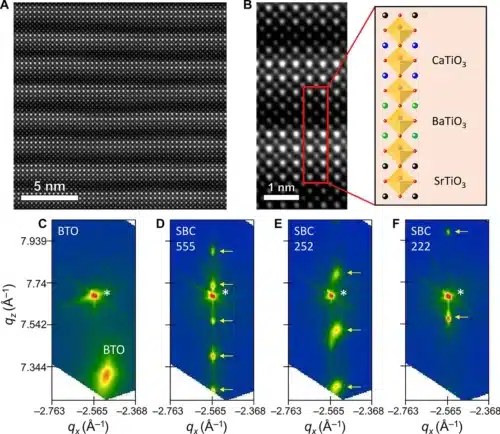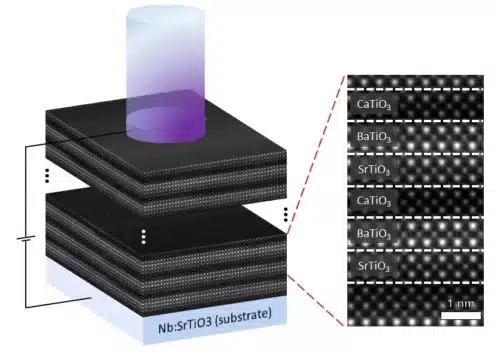Martin Luther University Halle-Wittenberg researchers have discovered a new method to boost solar cell efficiency by 1,000 times with stacked titanate layers.

Solar cells are mostly silicon-based, but their efficiency is limited. To overcome this, researchers explore alternative materials like barium titanate, a ferroelectric compound composed of barium and titanium. Ferroelectric materials possess separated positive and negative charges, resulting in an asymmetric structure that generates electricity from light. Unlike silicon, ferroelectric crystals do not require a pn junction to induce the photovoltaic effect, streamlining solar panel manufacturing.
Researchers at Martin Luther University Halle-Wittenberg (MLU) have discovered a new method to boost solar cell efficiency by 1,000 times. The team created crystalline layers of barium titanate, strontium titanate, and calcium titanate, alternately placed on top of one another in a lattice structure.
By vaporizing the crystals using a high-power laser and depositing them on carrier substrates, the researchers have embedded barium titanate between strontium titanate and calcium titanate. The resulting material consists of 500 layers and is approximately 200 nanometers thick. During photoelectric measurements, laser light irradiated the new material. As a result, despite reducing the proportion of barium titanate, the current flow was up to 1,000 times stronger compared to pure barium titanate of similar thickness. Lattice layers enhance permittivity, enabling more accessible electron flow through light excitation. Layer structure yields higher temperature performance than pure ferroelectrics, with enhanced durability and no special packaging needed.

The new material enables highly efficient and cost-effective solar panels. Moreover, they occupy less space, making them perfect for urban environments with limited space availability. The material can greatly amplify solar panel efficiency by enhancing the photovoltaic effect of ferroelectric crystals. The new discovery paves the way for enhanced solar cell efficiency. The researchers can develop a substance that generates substantially more electricity than conventional silicon-based panels through strategic material combinations. The team is actively constructing a prototype solar cell. A triumph here could pave the way for commercial solar panels utilizing the new material soon.
In the future, the researchers will further investigate the intricate mechanisms underlying the strong photovoltaic effect generated by material interactions. Additionally, they aim to increase efficiency by refining its composition or structure through experimentation.






